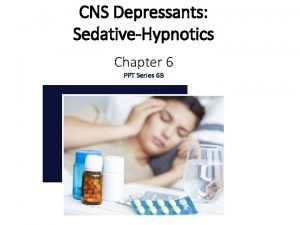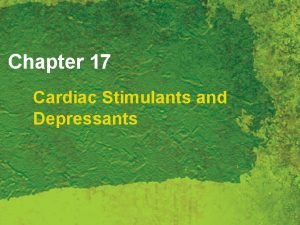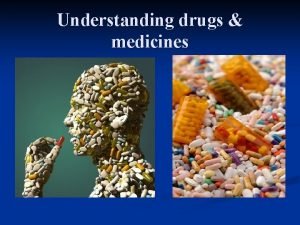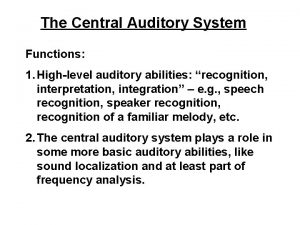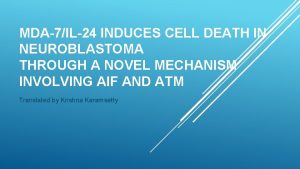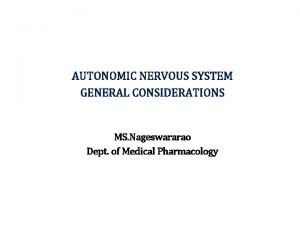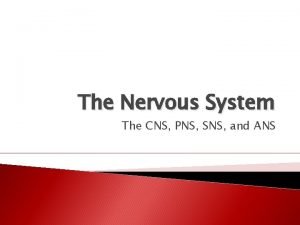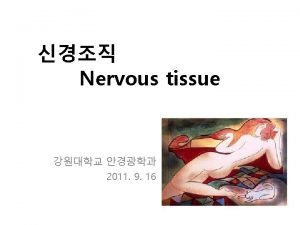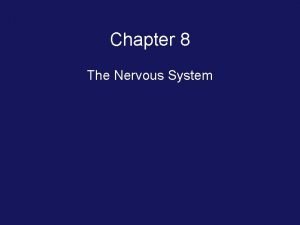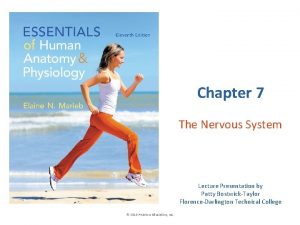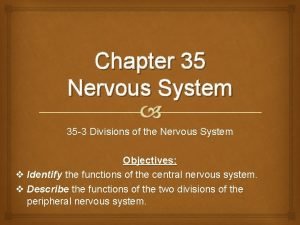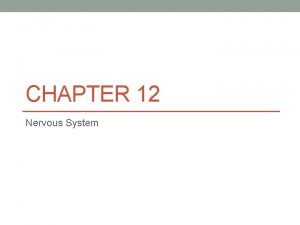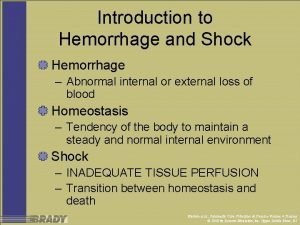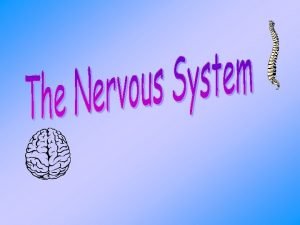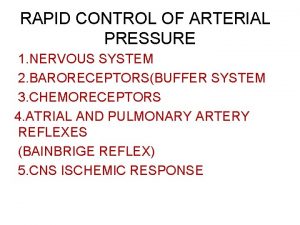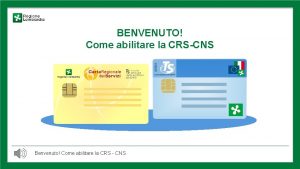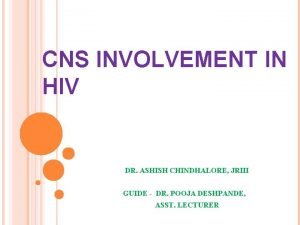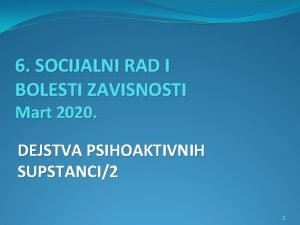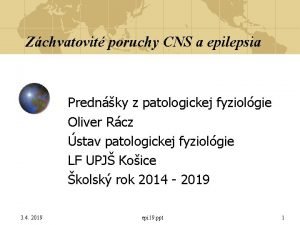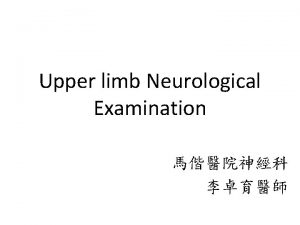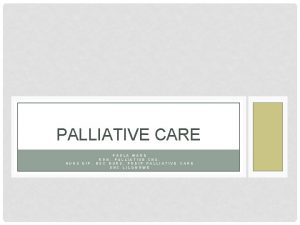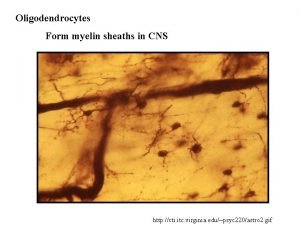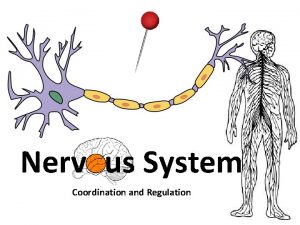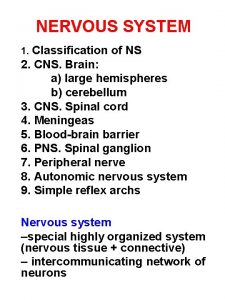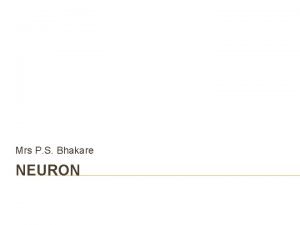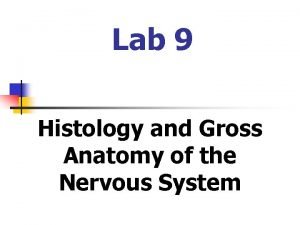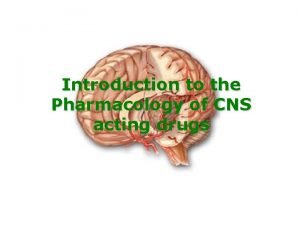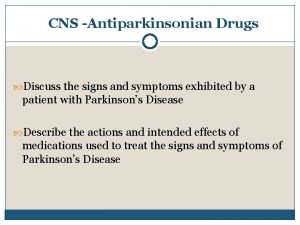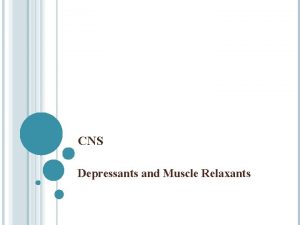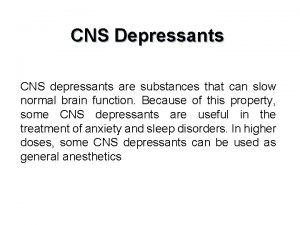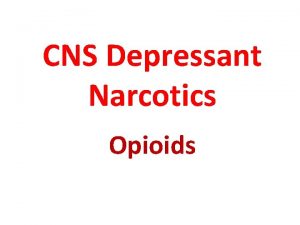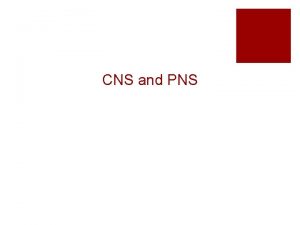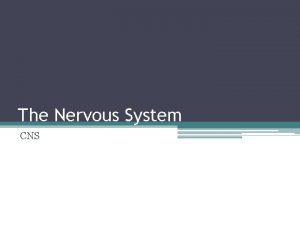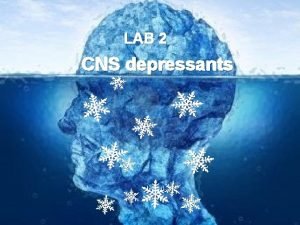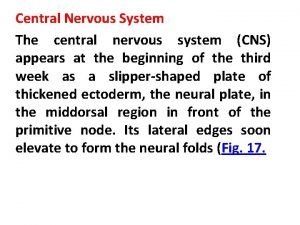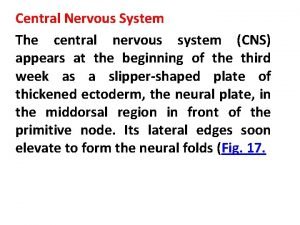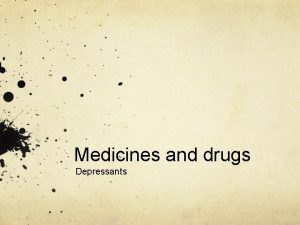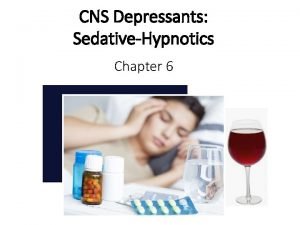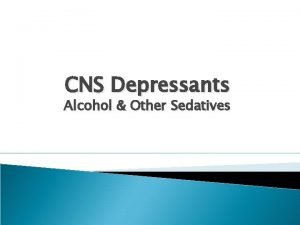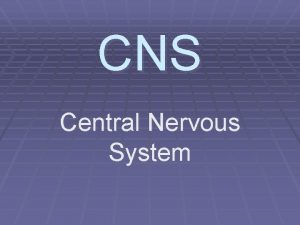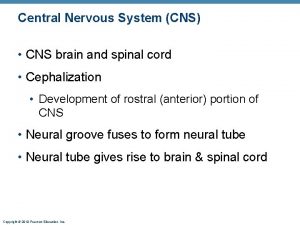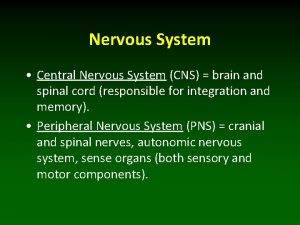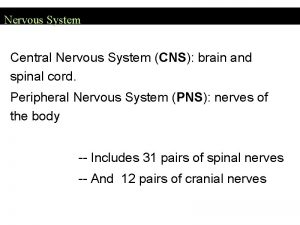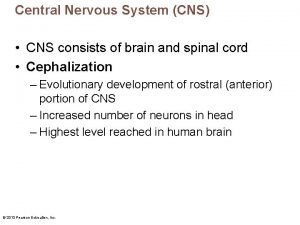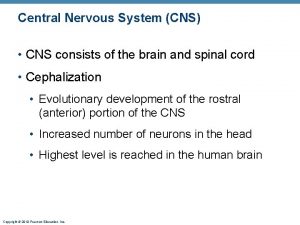Chapter 12 Central Nervous System CNS Depressants and






















































- Slides: 54

Chapter 12 Central Nervous System (CNS) Depressants and Muscle Relaxants Copyright © 2017, Elsevier Inc. All rights reserved.

CNS Depressants Sedatives Drugs that have an inhibitory effect on the CNS to the degree that they reduce: Nervousness Ø Excitability Ø Irritability Ø Copyright © 2017, Elsevier Inc. All rights reserved. 2

CNS Depressants (Cont. ) Hypnotics Cause sleep Much more potent effect on CNS than sedatives A sedative can become a hypnotic if it is given in large enough doses. Copyright © 2017, Elsevier Inc. All rights reserved. 3

CNS Depressants (Cont. ) Sedative-hypnotics: dose dependent At low doses, calm the CNS without inducing sleep At high doses, calm the CNS to the point of causing sleep Classified into three main groups: Barbiturates Ø Benzodiazepines Ø Miscellaneous drugs Ø Copyright © 2017, Elsevier Inc. All rights reserved. 4

Sleep Normal sleep is cyclic and repetitive A sleeping person is unaware of sensory stimuli within the immediate environment Sleep architecture Rapid eye movement (REM) sleep Ø Non-REM sleep Ø REM interference REM rebound Copyright © 2017, Elsevier Inc. All rights reserved. 5

CNS Depressants: Benzodiazepines Formerly the most commonly prescribed sedative-hypnotic drugs Nonbenzodiazepines are currently more frequently prescribed Favorable drug effect profiles, efficacy, and safety Copyright © 2017, Elsevier Inc. All rights reserved. 6

CNS Depressants: Benzodiazepines (Cont. ) Classified as either: Sedative-hypnotic Ø Anxiolytic (medication that relieves anxiety) Ø Copyright © 2017, Elsevier Inc. All rights reserved. 7

Benzodiazepines: Sedative-Hypnotic Types • Long acting • Intermediate acting • Ø Clonazepam (Klonopin), diazepam (Valium), flurazepam (Dalmane) Ø Alprazolam (Xanax), lorazepam (Ativan), temazepam (Restoril) Short acting Ø Midazolam (Versed), triazolam (Halcion), eszopiclone (Lunesta), ramelteon (Rozerem), zaleplon (Sonata), zolpidem (Ambien) Copyright © 2017, Elsevier Inc. All rights reserved.

Benzodiazepines: Mechanism of Action Depress CNS activity Affect hypothalamic, and limbic systems of the brain Benzodiazepine receptors Ø Gamma-aminobutyric acid (GABA) Do not suppress rapid eye movement (REM) sleep as much as barbiturates do Do not increase metabolism of other drugs Copyright © 2017, Elsevier Inc. All rights reserved. 9

Benzodiazepines: Drug Effects Calming effect on the CNS Useful in controlling agitation and anxiety Reduce excessive sensory stimulation, inducing sleep Induce skeletal muscle relaxation Copyright © 2017, Elsevier Inc. All rights reserved. 10

Benzodiazepines: Indications Sedation Sleep induction Skeletal muscle relaxation Anxiety relief Anxiety-related depression Copyright © 2017, Elsevier Inc. All rights reserved. 11

Benzodiazepines: Indications (Cont. ) Treatment of acute seizure disorders Treatment of alcohol withdrawal Agitation relief Balanced anesthesia Moderate or conscious sedation Copyright © 2017, Elsevier Inc. All rights reserved. 12

Benzodiazepines: Adverse Effects Mild and infrequent: Headache Ø Drowsiness Ø Dizziness Ø Cognitive impairment Ø Vertigo Ø Lethargy Ø Fall hazard for older adults Ø “Hangover” effect or daytime sleepiness Ø Copyright © 2017, Elsevier Inc. All rights reserved. 13

Audience Response System Question When providing education to the patient on the use of a benzodiazepine medication, the nurse will include which information? A. These medications have little effect on the normal sleep cycle. B. Using this medication may cause drowsiness the next day. C. It is safe to drive while taking this medication. D. These drugs are safe to use with alcohol. Copyright © 2017, Elsevier Inc. All rights reserved. 14

Benzodiazepines: Toxicity and Overdose Somnolence Confusion Coma Diminished reflexes Do not cause hypotension and respiratory depression unless taken with other CNS depressants Treatment symptomatic and supportive Ø Flumazenil as an antidote Copyright © 2017, Elsevier Inc. All rights reserved. 15

Benzodiazepines: Interactions Azole antifungals, verapamil, diltiazem, protease inhibitors, macrolide antibiotics, grapefruit juice CNS depressants (alcohol, opioids) Olanzapine Rifampin Copyright © 2017, Elsevier Inc. All rights reserved. 16

Diazepam (Valium) First clinically available benzodiazepine drug. It has varied uses, including treatment of anxiety. Copyright © 2017, Elsevier Inc. All rights reserved. 17

Midazolam (Versed) Most commonly used preoperatively and for moderate sedation. Causes amnesia and anxiolysis (reduced anxiety) as well as sedation. Normally administered by injection in adults Liquid oral dosage form is also available for children. Copyright © 2017, Elsevier Inc. All rights reserved. 18

Temazepam (Restoril) Intermediate-acting benzodiazepine One of the metabolites of diazepam Normally induces sleep within 20 to 40 minutes Long onset of action, so it is recommended that patients take it about 1 hour prior to going to bed Still an effective hypnotic; however, it has been replaced by newer drugs Copyright © 2017, Elsevier Inc. All rights reserved. 19

Nonbenzodiazepine: Eszopiclone (Lunesta) First hypnotic to be FDA approved for long-term use Designed to provide a full 8 hours of sleep Considered a short- to intermediate-acting agent Patients should allot 8 hours of sleep time and should avoid taking hypnotics when they must awaken in less than 6 to 8 hours. Copyright © 2017, Elsevier Inc. All rights reserved. 20

Nonbenzodiazepine: Ramelteon (Rozerem) Structurally similar to the hormone melatonin: works as an agonist at melatonin receptors in the CNS Technically, it is not a CNS depressant; used as hypnotic Not classified as a controlled substance Indicated for patients who have difficulty with sleep onset rather than sleep maintenance Copyright © 2017, Elsevier Inc. All rights reserved. 21

Nonbenzodiazepine: Zaleplon (Sonata) Short-acting nonbenzodiazepine hypnotic Unique advantage of this drug stems from its very short half-life Patients whose sleep difficulties include early awakenings can take a dose in the middle of the night as long as it is at least 4 hours before they must arise. Copyright © 2017, Elsevier Inc. All rights reserved. 22

Nonbenzodiazepine: Zolpidem (Ambien) Short-acting nonbenzodiazepine hypnotic Lower incidence of daytime sleepiness compared with benzodiazepine hypnotics Ambien CR is a longer acting form with two separate drug reservoirs Somnambulation Copyright © 2017, Elsevier Inc. All rights reserved. 23

Herbal Products: Kava Used to relieve anxiety, stress, and restlessness and to promote sleep May cause temporary yellow skin discoloration (extended, continued intake) and visual disturbances Potential interactions with alcohol, barbiturates, and psychoactive drugs Contraindicated in liver disease, alcoholism, other conditions Patient should not operate heavy machinery during use. Copyright © 2017, Elsevier Inc. All rights reserved. 24

Herbal Products: Valerian Used to relieve anxiety, restlessness, and sleep disorders May cause CNS depression, hepatotoxicity, nausea, vomiting, anorexia, restlessness, insomnia Many interactions, including with CNS depressants, MAOIs, phenytoin, warfarin, and alcohol Contraindicated in cardiac and liver disease Patient should not operate heavy machinery during use. Copyright © 2017, Elsevier Inc. All rights reserved. 25

Barbiturates First introduced in 1903; were the standard drugs for insomnia and sedation Habit forming; low therapeutic index Only a handful commonly used today partly because of the safety and efficacy of benzodiazepines Copyright © 2017, Elsevier Inc. All rights reserved. 26

Barbiturates: Mechanism of Action Site of action: brainstem (reticular formation) By potentiating the action of GABA, nerve impulses traveling in the cerebral cortex are inhibited. Copyright © 2017, Elsevier Inc. All rights reserved. 27

Barbiturates: Drug Effects Low doses: sedative effects High doses: hypnotic effects (also lower respiratory rate) Notorious enzyme inducers Stimulate liver enzymes that cause metabolism or breakdown of many drugs Ø Result in shortened duration of action Ø Copyright © 2017, Elsevier Inc. All rights reserved. 28

Barbiturates: Indications Sedatives Anticonvulsants Anesthesia for surgical procedures Copyright © 2017, Elsevier Inc. All rights reserved. 29

Barbiturates: Four Categories Ultrashort acting Ø Sedation and control of convulsive conditions Intermediate -acting Ø Anesthesia for short surgical procedures, other uses Sedation and control of convulsive conditions Long acting Ø Sleep induction, epileptic seizure prophylaxis Copyright © 2017, Elsevier Inc. All rights reserved. 30

Barbiturates: Adverse Effects Body System Adverse Effects Cardiovascular Vasodilation, hypotension CNS Drowsiness, lethargy, vertigo Respiratory depression, cough Copyright © 2017, Elsevier Inc. All rights reserved. 31

Barbiturates: Adverse Effects (Cont. ) Body System GI Adverse Effects Nausea, vomiting, diarrhea, constipation Hematologic Agranulocytosis, thrombocytopenia Other Hypersensitivity reactions, Stevens-Johnson syndrome Copyright © 2017, Elsevier Inc. All rights reserved. 32

Barbiturates: Adverse Effects (Cont. ) Reduced REM sleep, resulting in: Agitation Ø Inability to deal with normal stress Ø Copyright © 2017, Elsevier Inc. All rights reserved. 33

Audience Response System Question An older adult patient taking multiple medications has a barbiturate added to his medication regimen. When administering a barbiturate to an older adult, the nurse should expect A. a decrease in dosages of the other medications. B. the patient will experience increased amounts of REM sleep. C. to administer half of the usual dose of the barbiturate. D. total relief of anxiety. Copyright © 2017, Elsevier Inc. All rights reserved. 34

Barbiturates: Toxicity and Overdose frequently leads to respiratory depression and subsequent respiratory arrest Overdose produces CNS depression (sleep to coma and death) Can be therapeutic Anesthesia induction Ø Uncontrollable seizures: “phenobarbital coma” Ø Copyright © 2017, Elsevier Inc. All rights reserved. 35

Barbiturates: Toxicity and Overdose (Cont. ) Treatment of overdose Symptomatic and supportive Ø Maintain adequate airway Ø Assisted ventilation or oxygen therapy Ø Fluids Ø Pressor support Ø Activated charcoal Ø Copyright © 2017, Elsevier Inc. All rights reserved. 36

Barbiturates: Drug Interactions Additive effects Ø Inhibited metabolism Ø Alcohol, antihistamines, benzodiazepines, opioids, tranquilizers MAOIs prolong the effects of barbiturates. Increased metabolism Ø Reduces anticoagulant response, leading to possible clot formation Copyright © 2017, Elsevier Inc. All rights reserved. 37

Common Barbiturates Pentobarbital (Nembutol) Phenobarbital Copyright © 2017, Elsevier Inc. All rights reserved. 38

Pentobarbital (Nembutal) Prototypical barbiturate Long-acting drug Uses: prevention of generalized tonic-clonic seizures and fever-induced convulsions, as well as treatment of hyperbilirubinemia in neonates Rarely used today as a sedative and is no longer recommended to be used as a hypnotic drug Copyright © 2017, Elsevier Inc. All rights reserved. 39

Over-the-Counter Hypnotics Nonprescription sleeping aids often contain antihistamines, which have CNS depressant effect. Doxylamine (Unisom) and diphenhydramine (Sominex), acetaminophen/diphenhydramine (Extra Strength Tylenol PM) As with other CNS depressants, concurrent use of alcohol can cause respiratory depression or arrest. Copyright © 2017, Elsevier Inc. All rights reserved. 40

Audience Response System Question Barbiturates have a low therapeutic index. This means A. B. C. D. low doses are not therapeutic. the toxic range is narrow. they are habit forming. the effective, safe dosage range is narrow. Copyright © 2017, Elsevier Inc. All rights reserved. 41

Muscle Relaxants Act to relieve pain associated with skeletal muscle spasms Majority are centrally acting CNS is the site of action Ø Similar in structure and action to other CNS depressants Ø Direct acting Act directly on skeletal muscle Ø Closely resemble GABA Ø Copyright © 2017, Elsevier Inc. All rights reserved. 42

Muscle Relaxants: Indications Relief of painful musculoskeletal conditions Muscle spasms Ø Management of spasticity of severe chronic disorders (multiple sclerosis, cerebral palsy) Ø Work best when used along with physical therapy Copyright © 2017, Elsevier Inc. All rights reserved. 43

Muscle Relaxants: Adverse Effects Extension of effects on CNS and skeletal muscles Euphoria Ø Lightheadedness Ø Dizziness Ø Drowsiness Ø Fatigue Ø Muscle weakness, others Ø Copyright © 2017, Elsevier Inc. All rights reserved. 44

Common Muscle Relaxants Baclofen (Lioresal) Cyclobenzaprine (Flexeril) Dantrolene (Dantrium) Metaxalone (Skelaxin) Tizanidine (Zanaflex) Carisoprodol (Soma) Chlorzoxazone (Paraflex) Methocarbamol (Robaxin) Copyright © 2017, Elsevier Inc. All rights reserved. 45

Audience Response System Question Which statement regarding muscle relaxants does the nurse identify as being accurate? A. Baclofen (Lioresal) is available as an injectable form for use with an implantable pump device. B. Cyclobenzaprine (Flexeril) produces little sedation. C. Patients taking muscle relaxants are at high risk of developing hypertension. D. Patients taking muscle relaxants should be told to stop taking the medication if they feel sleepy. Copyright © 2017, Elsevier Inc. All rights reserved. 46

Nursing Implications Before beginning therapy, obtain a thorough history regarding allergies, use of other medications, health history, and medical history. Obtain baseline vital signs and I&O, including supine and erect blood pressure. Assess for potential disorders and conditions that may be contraindications and for potential drug interactions. Copyright © 2017, Elsevier Inc. All rights reserved. 47

Nursing Implications (Cont. ) Give hypnotics 30 to 60 minutes before bedtime for maximum effectiveness in inducing sleep (depends on drug’s onset). Most benzodiazepines cause REM rebound a tired feeling the next day; use with caution in older adults. Instruct patients to avoid alcohol and other CNS depressants. Copyright © 2017, Elsevier Inc. All rights reserved. 48

Nursing Implications (Cont. ) Check with the prescriber before taking any other medications, including over-the-counter medications. Rebound insomnia may occur for a few nights after a 3 - to 4 -week regimen has been discontinued. Copyright © 2017, Elsevier Inc. All rights reserved. 49

Nursing Implications (Cont. ) Safety is important: Keep side rails up or use bed alarms. Ø Do not permit smoking. Ø Assist patient with ambulation (especially older adults). Ø Keep call light within reach. Ø Monitor for adverse effects. Copyright © 2017, Elsevier Inc. All rights reserved. 50

Nursing Implications (Cont. ) Monitor for therapeutic effects: Increased ability to sleep at night Ø Fewer awakenings Ø Shorter sleep-induction time Ø Few adverse effects, such as “hangover” effects Ø Improved sense of well-being because of improved sleep Ø For muscle relaxants: decreased spasticity, decreased rigidity Ø Copyright © 2017, Elsevier Inc. All rights reserved. 51

Case Study A patient comes to the health care provider’s office with complaints of feeling anxious and having difficulty sleeping. The patient tells the nurse that he wants to start taking valerian and Kava because he heard that these work well to help the problems he is experiencing. The patient has the following questions about valerian and Kava. What is the best response by the nurse? Copyright © 2017, Elsevier Inc. All rights reserved. 52

Case Study (Cont. ) The patient asks, “Is there anything I have to worry about when taking Kava? ” The best response by the nurse is: 1. “Kava is a natural product which has no side effects. ” 2. “You need a prescription to take Kava. ” 3. “No worries, Kava is recommended for patients with depression. ” 4. “It is best to inform you health care provider of any additional medication or supplements you plan to take to check for interactions that may be harmful. ” Copyright © 2017, Elsevier Inc. All rights reserved. 53

Case Study (Cont. ) The patient tells the nurse that his friend has been taking valerian for a long period of time and that he isn’t feeling so well. The patient asks the nurse what the adverse effects of valerian are. The best response by the nurse is that adverse effects of valerian include 1. insomnia. 2. yellow skin. 3. bruising. 4. increased appetite. Copyright © 2017, Elsevier Inc. All rights reserved. 54
 Cns depressants ppt
Cns depressants ppt Barbiturates classification
Barbiturates classification What are the characteristics of nervous tissue
What are the characteristics of nervous tissue Fundamentals of the nervous system and nervous tissue
Fundamentals of the nervous system and nervous tissue Processes of nerve cell
Processes of nerve cell Cardiac stimulants and depressants
Cardiac stimulants and depressants Depressants affect the__________.
Depressants affect the__________. Major divisions
Major divisions Hydras
Hydras Central nervous system amusement park
Central nervous system amusement park Brain regions
Brain regions Building vocabulary activity: the central nervous system
Building vocabulary activity: the central nervous system Bser aer
Bser aer Central nervous system divisions
Central nervous system divisions Central nervous system for kids
Central nervous system for kids Nervous system and digestive system
Nervous system and digestive system Endocrine system
Endocrine system Endocrine system vs nervous system
Endocrine system vs nervous system Chapter 15 nervous system diseases and disorders
Chapter 15 nervous system diseases and disorders Ans and cns difference
Ans and cns difference Dermatome map
Dermatome map Nervous system vs endocrine system venn diagram
Nervous system vs endocrine system venn diagram Central nervous sysytem
Central nervous sysytem Bipolar neuron function
Bipolar neuron function Chapter 8 the nervous system
Chapter 8 the nervous system Chapter 7 the nervous system figure 7-2
Chapter 7 the nervous system figure 7-2 Chapter 35 nervous system
Chapter 35 nervous system Chapter 14 lesson 3 the nervous system
Chapter 14 lesson 3 the nervous system Chapter 12 nervous system
Chapter 12 nervous system C=0 sampling plan
C=0 sampling plan Naas community national school
Naas community national school Cns ischemic response
Cns ischemic response Nervous tissue ppt
Nervous tissue ppt Composition of cns
Composition of cns Cns ischemic response
Cns ischemic response Mean bp formula
Mean bp formula Atrail
Atrail Www.lispa.it cns
Www.lispa.it cns Tuberculomas
Tuberculomas Depresori cns
Depresori cns Cns international school
Cns international school Cns poruchy
Cns poruchy Power examination
Power examination Fhbdf
Fhbdf Forebrain
Forebrain Cns ward
Cns ward Cns
Cns Edrolo
Edrolo Classification of cns
Classification of cns Soma cns
Soma cns Vermis sheep brain
Vermis sheep brain Cns
Cns Cns educar
Cns educar Soma cns
Soma cns Pagitane
Pagitane
